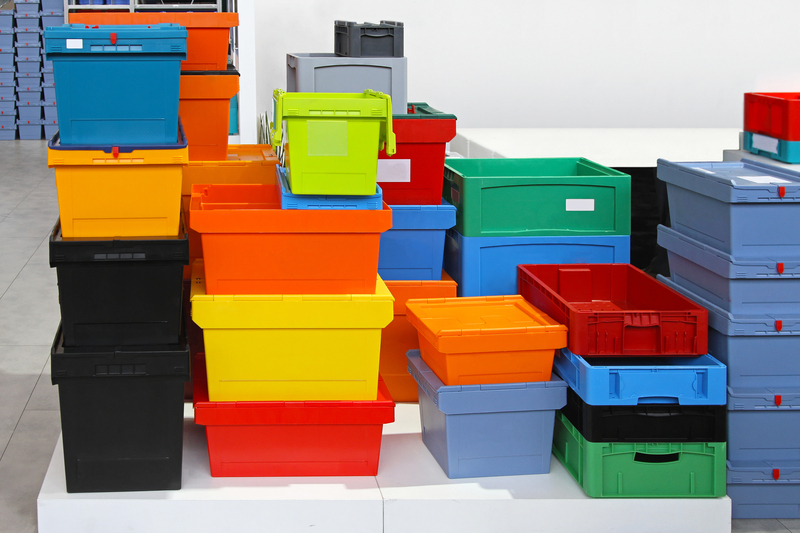Strategies for Storing Your Freezer When Idle
Posted on 27/05/2025
Strategies for Storing Your Freezer When Idle: Essential Tips for Optimal Preservation
Freezers are invaluable appliances that help us keep food fresh for long periods. However, there are times when a freezer might not be in regular use. Whether you're moving, embarking on a long vacation, or just planning to keep your freezer idle for an extended period, storing your freezer when not in use requires deliberate and careful preparation.
This comprehensive guide explores effective strategies for storing your freezer when idle. Ensuring you protect your appliance, extend its lifespan, and prevent issues associated with improper storage.

Why Properly Storing Your Freezer Matters
Many people overlook the importance of proper freezer storage during idle periods. Yet, neglecting this step can lead to unwanted consequences such as:
- Mold and mildew growth due to leftover moisture.
- Unpleasant odors lingering in the freezer interior.
- Mechanical problems when restarting the freezer.
- Pest infestations inside or around the freezer.
- Reduced efficiency and lifespan of the appliance.
Understanding how to store your freezer when it's not in use ensures you avoid these problems and keeps your appliance in top condition.
Step-by-Step Strategies for Storing an Idle Freezer
1. Thorough Cleaning of the Freezer Interior
Cleaning your freezer before putting it into storage is essential. Even small residues or spills can cause lingering smells, attract pests, or even promote mold growth.
- Unplug the freezer and allow it to fully defrost. Remove all food items and racks.
- Clean the interior with a solution of baking soda and warm water (typically 2 tablespoons baking soda per quart of water). This neutralizes odors and sanitizes surfaces.
- Wipe every shelf, drawer, and nook with a soft cloth.
- Dry the interior thoroughly to remove all moisture.
*Tip: For persistent odors, leave an open box of baking soda inside the freezer for a few hours before final wiping.*
2. Defrost Completely
When preparing a freezer for storage, it's vital to ensure no ice remains inside. Ice can melt during storage, causing water damage, rust, or even electrical hazards.
- Allow several hours for all ice buildup to melt.
- Place towels or a tray underneath to absorb excess water.
- Wipe all surfaces to confirm dryness before proceeding.
3. Keep the Door Ajar
One of the most crucial strategies for idle freezer storage is to leave the freezer door slightly open. Closing doors tightly seals in residual moisture and creates an environment for mold and mildew.
- Use a towel, wedge, or dedicated door prop to ensure the door cannot accidentally close.
- This allows air circulation and prevents musty smells or growth of microorganisms.
Never store a dormant freezer with the door closed!
4. Disinfect and Deodorize Gaskets and Drawers
The gasket (rubber seal around the door) and detachable parts should receive special attention:
- Disinfect gaskets with a mild bleach solution (1 tablespoon bleach to 1 quart water) to kill bacteria.
- Remove and wash drawers, baskets, or containers with hot, soapy water. Let them air dry thoroughly before placing them back.
- Check and clean all crevices and corners, as these spots can accumulate grime.
Tip: Apply a light coat of petroleum jelly to the gasket to prevent it from drying out during extended idleness.
5. Store in an Ideal Location
Where you store your idle freezer also affects its condition when you resume usage. Consider these guidelines:
- Keep the freezer in a dry area. Avoid basements prone to flooding or damp garages.
- Shield from direct sunlight or heat sources, as temperature fluctuations can harm the appliance.
- Allow enough space around the unit for airflow, which minimizes moisture accumulation and deters pests.
- If storing outside, cover the freezer with a breathable fabric (never plastic) to prevent dust but allow moisture to escape.
6. Disconnect from Power Safely
If you're storing your freezer unplugged:
- Wrap and secure the power cord with a twist tie or Velcro band. Hang it on the back of the freezer to avoid tripping or damage.
- Never coil tightly or place under the unit, as this can cause wire fatigue.
- Double-check that all interior lights and fans are off.
7. Control Pests
Pests such as rodents and insects can be attracted to the scent of food, even after cleaning. Effective freezer storage strategies include:
- Sprinkling a small amount of baking soda or activated charcoal inside to absorb lingering smells.
- Placing natural pest repellents around the freezer's base, such as sachets of dried lavender, cedar rings, or commercial rodent repellents.
Regularly check the storage area for signs of pests and address quickly if discovered.
8. Protect the Exterior Finish
To keep your freezer looking and functioning its best, ensure the exterior is clean and protected:
- Wipe down the outside surfaces with mild soap and water to remove dust or grease.
- Dry thoroughly with a microfiber cloth to avoid rust or streaks.
- Touch up minor scratches with appliance paint to prevent rusting.
For stainless steel freezers, use a specialized cleaner for best results.
9. Routine Check-Ups During Storage
Even when not in use, it's wise to periodically inspect the freezer:
- Make sure the door is still propped open.
- Look for any signs of moisture, mold, or pests.
- Check that no items are being stacked on top which could dent lids or cause imbalance.
Monthly check-ups make it easy to address issues before they cause long-term damage.
Frequently Asked Questions About Storing a Freezer When Not in Use
- Can you leave a freezer unplugged for months?
Yes, as long as it is cleaned, completely dry, and stored properly with the door open. - Does an unused freezer go bad?
Not usually, but failing to prepare your freezer for storage can lead to mold, odors, and mechanical issues over time. - Is it better to leave a freezer on or off when not using?
For short idle periods (a week or less), you may leave it running. For longer stretches, unplug and follow the above freezer storage best practices.
Risks of Improper Freezer Storage
Improper freezer idle storage can result in:
- Health hazards from mold and bacteria.
- Shortened appliance lifespan due to corrosion or mechanical wear.
- Pest infestations that are difficult to remove.
- Costly repairs when reactivating the freezer.
Expert Tips for Storing a Freezer During Seasonal Downtime
- Label the plug or appliance CLEARLY with a note ("Cleaned and Ready/Do Not Plug In") to remind others that it's prepared for storage.
- If storing in a shared location (apartment or facility basement), mark it with your identification to avoid confusion.
- Store racks and trays inside, but stack loosely to allow airflow.
- Before restarting after storage, clean, dry, and check all parts--including seals--for mold or residue.
- Allow at least four hours after moving the freezer before plugging in, to let refrigerant settle.

Alternatives to Complete Shutdown
Some situations may warrant alternative strategies:
- If the freezer must be idle for only a brief period, consider running it empty at a low setting, but this does use electricity.
- For outdoor freezers in mild climates, you may operate the freezer seasonally, but always deep-clean and inspect before idling again.
Final Thoughts: Best Practices for Freezer Storage During Idle Periods
Storing your freezer when idle is a simple yet crucial process that preserves the appliance's hygiene, functionality, and value. By thoroughly cleaning, defrosting, and keeping the door ajar, you eliminate the main sources of damage. Select a suitable location and protect against pests, and your freezer will be ready to serve you when next needed, with minimal headaches.
Follow these expert-endorsed freezer storage strategies for peace of mind--and a freezer that stays fresh, clean, and reliable, even after months of downtime.
Remember, a small amount of preparation today can save a lot of hassle and cost in the future. Take the time to store your idle freezer appropriately, and enjoy long-term benefits for years to come.



